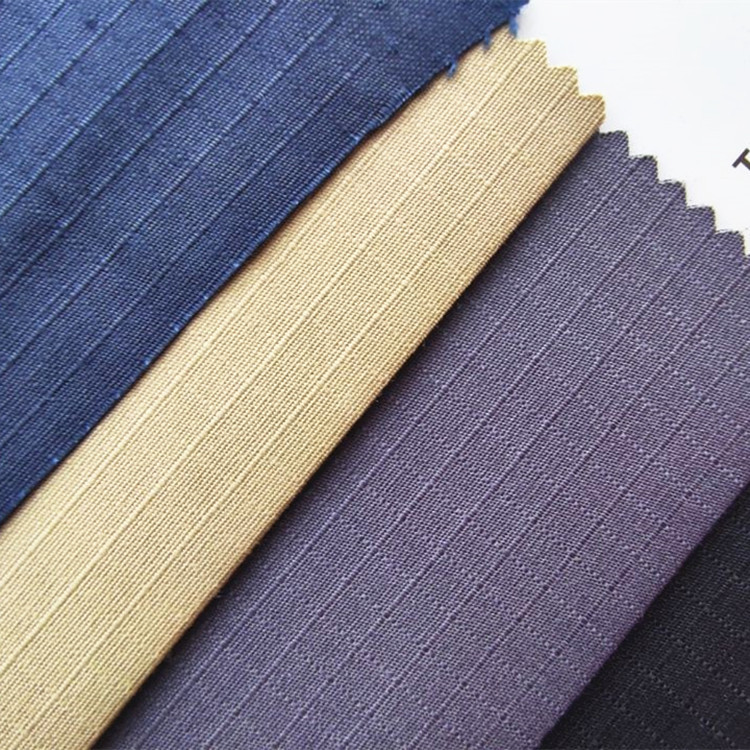In B2B textile sourcing, ripstop fabrics are widely used for uniforms, workwear, tactical gear, and outdoor applications. But when it comes to choosing between polyester/cotton blends and 100% cotton, buyers often face conflicting information. This guide will help you understand the technical differences and practical considerations that matter most.
Polyester/Cotton ripstop offers better durability, dimensional stability, and wrinkle resistance, making it ideal for high-performance applications. 100% cotton ripstop provides superior breathability and a softer feel, preferred for comfort-focused garments. Choosing the right fabric depends on usage needs, care preferences, and environmental conditions. Both have distinct advantages for different functional requirements.
Whether you’re sourcing for mass production or a specific project, choosing the right fabric goes beyond the fiber content. Let’s break it down further.
Polyester/Cotton vs 100% Cotton Ripstop: Key Differences
We often get asked: “Which one is better?” But the real question is: “Better for what?”
| Feature | Polyester/Cotton | 100% Cotton |
|---|---|---|
| Tear Resistance | High | Medium |
| Shrinkage After Wash | Minimal | Higher |
| Breathability | Moderate | High |
| Color Retention | Strong | Moderate |
| Touch & Feel | Slightly stiff | Soft, natural |
| Care Requirements | Low-maintenance | Needs more care |
| Common Blend Ratio | 65/35 or 60/40 | 100% Cotton |
Poly cotton ripstop is generally stronger and more dimensionally stable—perfect for garments that require durability and shape retention. 100% cotton, on the other hand, is often chosen for comfort, natural touch, and better skin breathability, especially in hot or humid environments.
Ripstop Grid Sizes: What Do 2mm, 5mm, 7mm, and 10mm Mean?
One of the lesser-known but crucial technical specs in ripstop is the grid size. These are the visible “boxes” woven into the fabric, designed to stop rips from spreading.
We typically see the following specs:
- 2mm grid: Fine and subtle, ideal for lightweight uniforms
- 5mm grid: Balanced strength and aesthetics, widely used
- 7mm & 10mm grids: More rugged look, used in tactical or outdoor gear
There are also two-yarn and three-yarn ripstop types. Three-yarn weaves create more pronounced boxes and greater reinforcement—suitable for high-stress applications. Always check if your customer or project requires a specific grid type; some tenders do specify this detail.
Wet Rubbing Fastness: The Hidden Challenge Behind Tender Requirements
In tender-based sourcing, fabric specifications are often strict. Buyers must meet colorfastness ratings such as:
- Washing Fastness: 4–5 grade
- Sweat Fastness: 4–5 grade
- Light Fastness: 4–5 grade
But the real challenge comes with wet rubbing fastness, especially in dark colors.
👉 Most colors can only reach Grade 3 in wet rubbing, even under ideal dyeing conditions. If a supplier easily promises 4 or 5, be cautious—are they referring to test samples or actual bulk production? The gap can be huge.
We always recommend requesting real bulk fabric test reports, and confirming the supplier understands ISO 105-X12 and related standards. What works in a lab on 2 meters of fabric may not hold on 5,000 meters.
How to Judge a Reliable Ripstop Supplier (Beyond Price)
Price alone doesn’t tell the full story. In ripstop sourcing, the real risk lies in post-order compromise. Many suppliers will over-promise to win the order, only to ask for buyer leniency later due to “technical limitations”.
Here’s how we handle it:
- Every batch is tested in our own lab for ISO standards before shipment
- We document test results internally for traceability
- We never overcommit—we’ll tell you upfront if something is not realistically achievable
- Our engineers have years of experience in dealing with military, industrial, and high-demand tender specifications
You don’t just need a supplier—you need a technical partner who understands the stakes.
Final Thoughts
Choosing between polyester/cotton and 100% cotton ripstop is not about “better or worse”—it’s about fit for purpose. Understand the specs, check real test data, and ask the right questions about consistency. A good supplier helps you win the project without compromising your reputation.
Need help analyzing your tender specs or fabric reports? Let’s talk.

